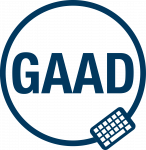Julie and I had led on the procurement for an accessibility solution for Moodle. We worked with stakeholders on the requirements and reviewed tender documents and arranged product demonstrations. We were very excited to finally use Blackboard Ally on our Moodle modules so we could see how the requirements translated into practice.
Olivia’s Blackboard Ally experience
I asked for Blackboard Ally accessibility check to be switched on for two modules that my team manage:
- Programme Administrator Training – online module for staff who are course officers for programmes
- Learning with Moodle – online module to introduce student to key Moodle functionality and provide them with an opportunity of trying out different features before they use them on their module.
The module resources are Moodle HTML resources including Book, Labels and Pages. There are no external files (e.g., Word/PDFs) available on these modules.
I decided to tackle the accessibility issues by accessing the module level accessibility report. The report organised the module accessibility issues into:
- low scoring content and
- content with the easiest issues to fix.
I found this to be an effective way to systematically work through accessibility issues on the module. As I fixed each piece of content, I could see my accessibility score increase and it encouraged me to keep fixing to try to reach a 100% accessibility. While the perfect score eluded me, I feel more confident that the content we have produced is more accessible to all staff and students.
In terms of challenges, Ally flagged colour contrast issues that weren’t picked up as contrast issues in other tools – WAVE accessibility evaluation tool and WebAim contrast checker. As these were screenshots of systems, I couldn’t fix the contrast and had to live with the fact that I could not reach a 100% module accessibility score!
Julie’s Blackboard Ally experience
With my Senior Lecturer hat on, I have been using the Blackboard Ally tool on a new module that I teach with Jane Secker for LEaD’s MA Academic Practice. The module is EDM124: Developing Digital Education and as we cover accessibility in the module, we felt it was important to ensure that our own content is as accessible as possible.
As this was a new module, we started from scratch with an empty Moodle course. Module resources are primarily PowerPoint slides, Word documents and links to recordings of teaching sessions. We also use the Moodle forums to post regular updates to students.
Before uploading content to Moodle, I have been using the accessibility checkers in PowerPoint and Word to review issues such as missing alternative (ALT) text for images, colour contrast and slide reading order in PowerPoint. As a result of using the Microsoft accessibility checker, the files uploaded to Moodle were given a high accessibility score by the Blackboard Ally tool, but despite the Microsoft checker reporting no issues, the Blackboard Ally report often found some additional items to fix. As Olivia found, there were some issues reported with colour contrast that weren’t flagged up by other checkers.
Like Olivia, I enjoyed the challenge of trying to improve the accessibility score and the system helpfully guides you through where fixes could be made. There are some items I can’t resolve at the moment as they require a wider change to some of the common documents used across the MA programme (e.g., assessment marking sheets), so I have to satisfy myself that a 99% score overall is the best that we can get to at this stage.
Lessons learned
- Delete content that you do not need. Don’t just hide it as it is counted in your accessibility score. Your older content might be from a time before you started using accessibility checkers and tools and is likely to generate a low accessibility score. It also makes it more time consuming to work through your module accessibility report.
- Use the in-built accessibility checkers for documents such as Word or PowerPoint and PDF before you upload to Moodle. This will help to correct many issues in advance of using the Ally tool.
- Remember Blackboard Ally is a tool and that you still need to use your own judgement on the accessibility of a piece of content. For example, you can get a high accessibility score by adding ALT text into an image, but Ally doesn’t know if the ALT text is meaningful. The Poet tool is a great resource to learn more about writing effective ALT text. Likewise, we both experienced challenges around colour contrast that weren’t picked up by other tools.
- 100% on the Ally report would be nice, but anything above 90% is excellent!


